Nemesis Bird. All serious birders are familiar with this concept, which is a bird, uncommon yet not rare, that eludes, evades, and generally thwarts all of a birder’s attempts to see it. Another qualification is that the bird in question seemingly mocks the pursuer by flaunting itself in front of anybody and everybody but the one person who wants to see it. Adding to this aggravation is that it often disappears at just the last minute after many repeated trips of many miles. Such former nemesis birds of mine have included the Golden-crowned Kinglet and Blue-headed Vireo. Nothing is more frustrating than hunting a nemesis; nothing is sweeter than finally laying waste to that bird.
So what is Evan’s nemesis bird? It is none other than the same nemesis of Wiley E. Coyote–the Roadrunner. No bird is more iconic of Arizona to outsiders, birders and otherwise, than the Greater Roadrunner. It’s on postcards, t-shirts, and on all kinds of overpriced and dust-collecting shlock. Who knows how this bird rose to such fame. Perhaps it’s because of Looney Tunes. Perhaps it’s because it is so readily identifiable. Perhaps it’s because EVERYONE who goes to Arizona sees one.
When we traveled to Arizona in 2014, we expected this bird. We counted on it like the Republicans count on Arizona to be a red state. It was a sure thing. Well, in this case, Arizona turned blue and so did we because we left the state that year completely missing on the Roadrunner. Like a typical nemesis bird, it did show itself to at least one person in our birding party. Laurence Butler was leading our single-file procession through the desert and called out that he spotted one. Though we were just a few yards behind Laurence, it gave all of us the slip. The loss was all the more agonizing because Laurence told us it had a lizard in its bill.
Anyhow, we were in a new year and on a new trip back to Arizona. In between trips, my parents would tell us here and there about how they’d see a Roadrunner in their yard or neighborhood. Figures. Our first day in Arizona this year, Evan and I decided to go looking for this bird. I was literally walking into the back yard to get Evan for this jaunt when I spied the Roadrunner for a second on top of the fence! We hustled up and over the fence to look for it, but it was gone. My parents’ back fence as well as the back fence of the entire neighborhood is bordered by a dike. In between the dike and the wall is ditch that is landscaped in a desert fashion–perfect habitat for a roadrunner. On the other side of the dike is a large run-off basin on the edge of an agricultural field. Evan and I took several walks along the dike to look for the Roadrunner. Success continued to elude us.
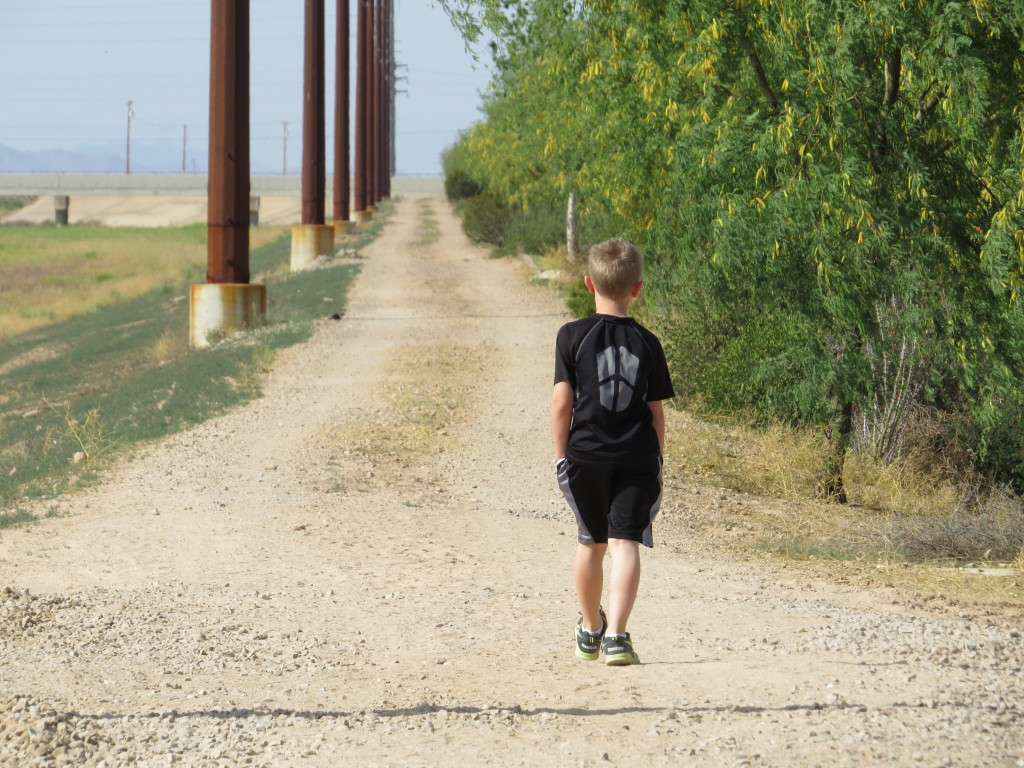
During the SE AZ odyssey, the Roadrunner’s nemesis-status rose to new heights. While I was birding up on Mt. Lemmon, Evan was back at Grandma and Grandpa’s. My died spied the neighborhood Roadrunner out the window in the front yard, but it disappeared before Evan could get on it. Then, while traveling home from our getaway to Green Valley, my dad was driving and hollered that a Roadrunner crossed the highway right in front of the van! After many, many times of calling out wildlife sightings while driving and sending Evan into a frantic state to see the wildlife and then have him burst into tears when he missed his split-second opportunity, I have learned to keep my mouth shut. My wife has helped me learn this lesson. My dad has not learned this lesson. The waterworks started up. I had to remind Evan how super lucky he has been to see a Great Gray, a Garganey, and an Elegant Trogon–three highly coveted birds that not many grown birders have seen; I told him it really was okay if other people saw the Roadrunner and he didn’t.
We had one last chance to find a Greater Roadrunner. Nothing was scheduled for our last day of vacation on April 2nd, so it was a day to hang out around the house. Evan and I took one more walk. Almost immediately, I saw the bugger squirt across the dike and disappear into…nothing. Evan again missed. I didn’t understand where it could have gone. Then, at the same time we both saw it as it popped up again across the street and hopped up on top of a wall! Evan finally got his bird. And I got my photo of a Roadrunner classically posed on a fence with a lizard!!
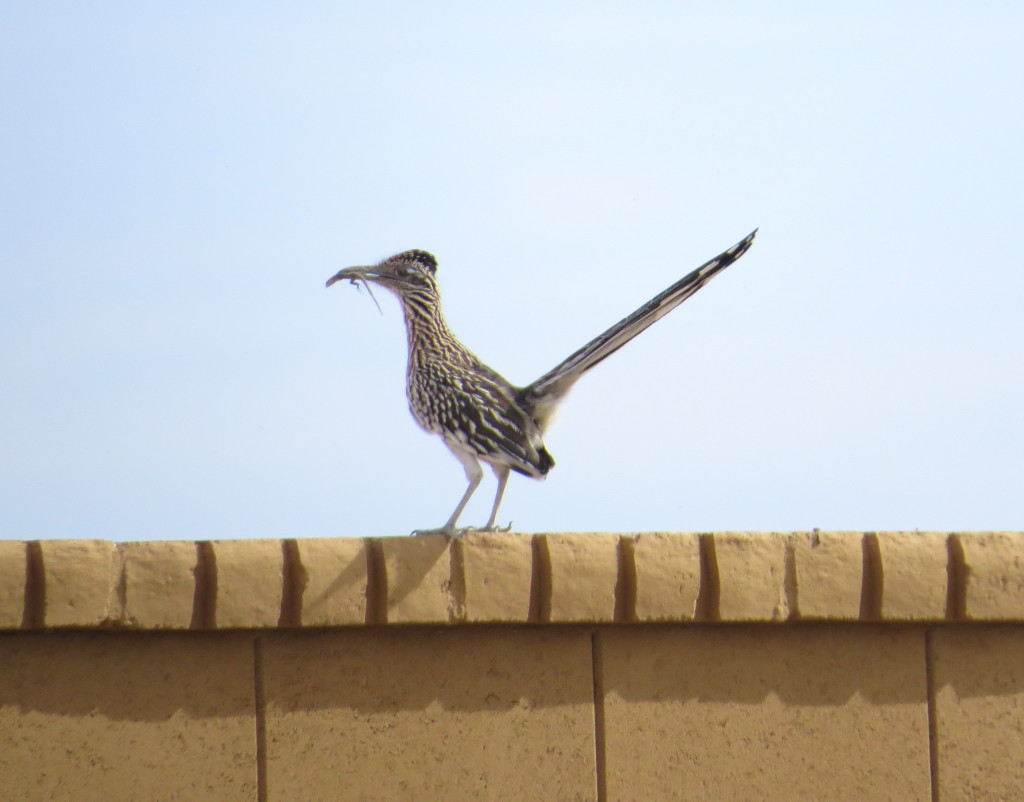
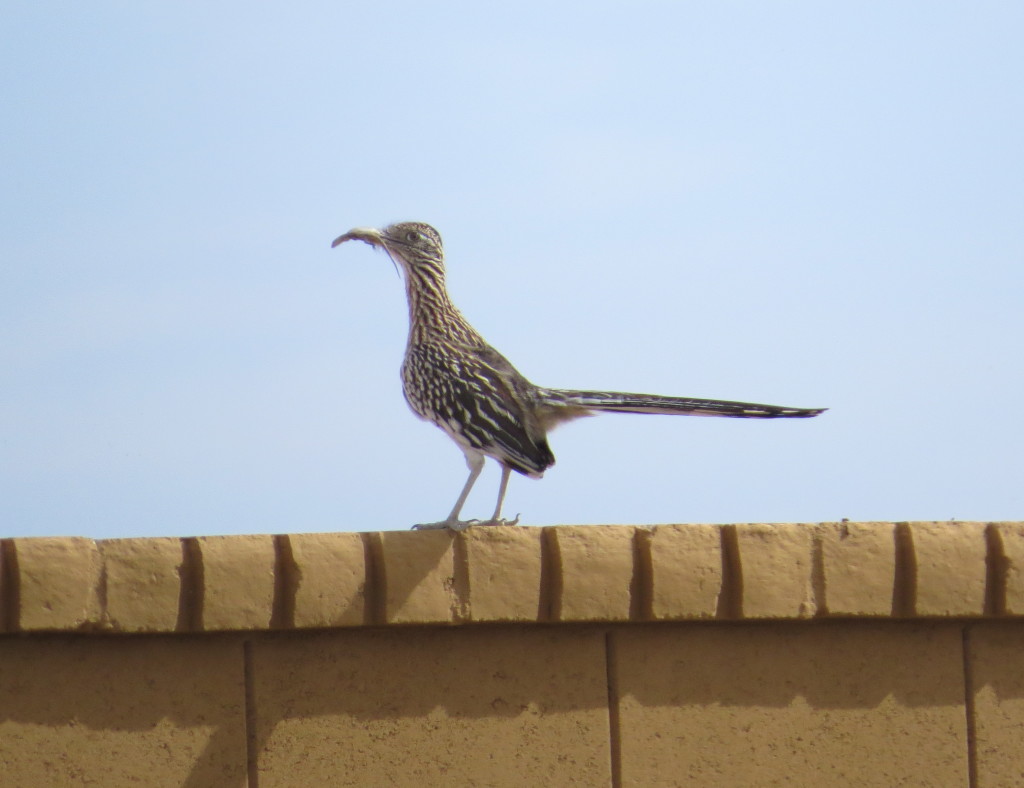
Then, as is the case with all nemesis birds, once they are finally found, they become easy, showing themselves often and/or in great numbers. Evan had more fun hunting this bird and spotting it after it would disappear over walls, across empty lots, in the landscaping, etc.
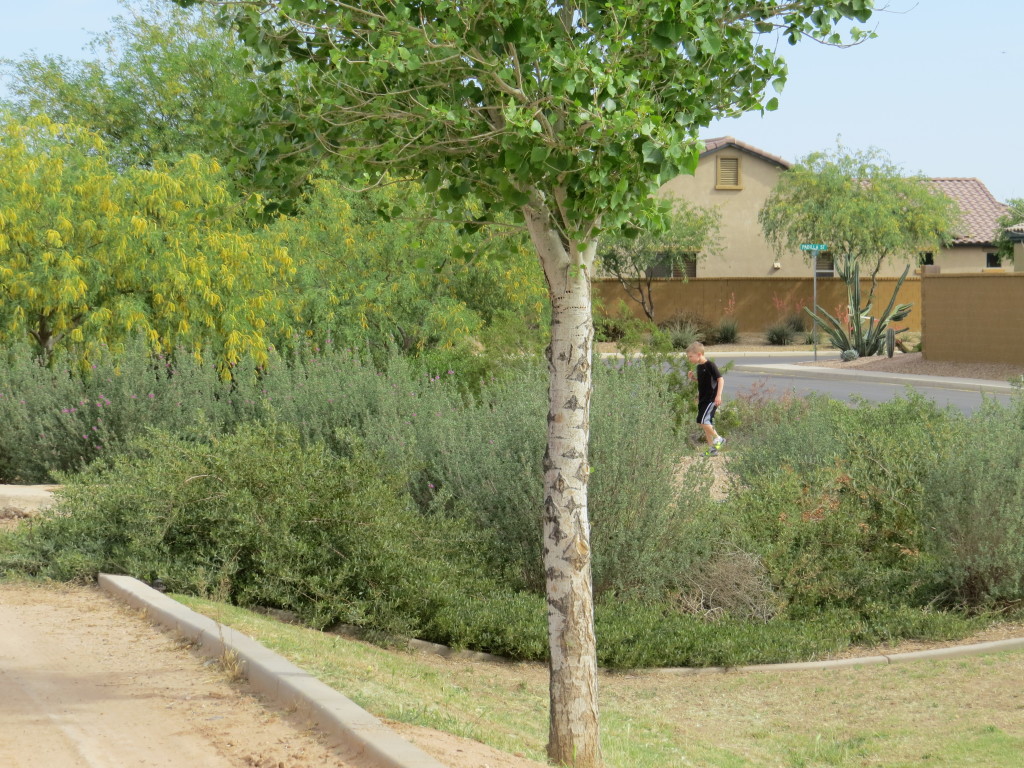
I was content to let the Roadrunner find me.
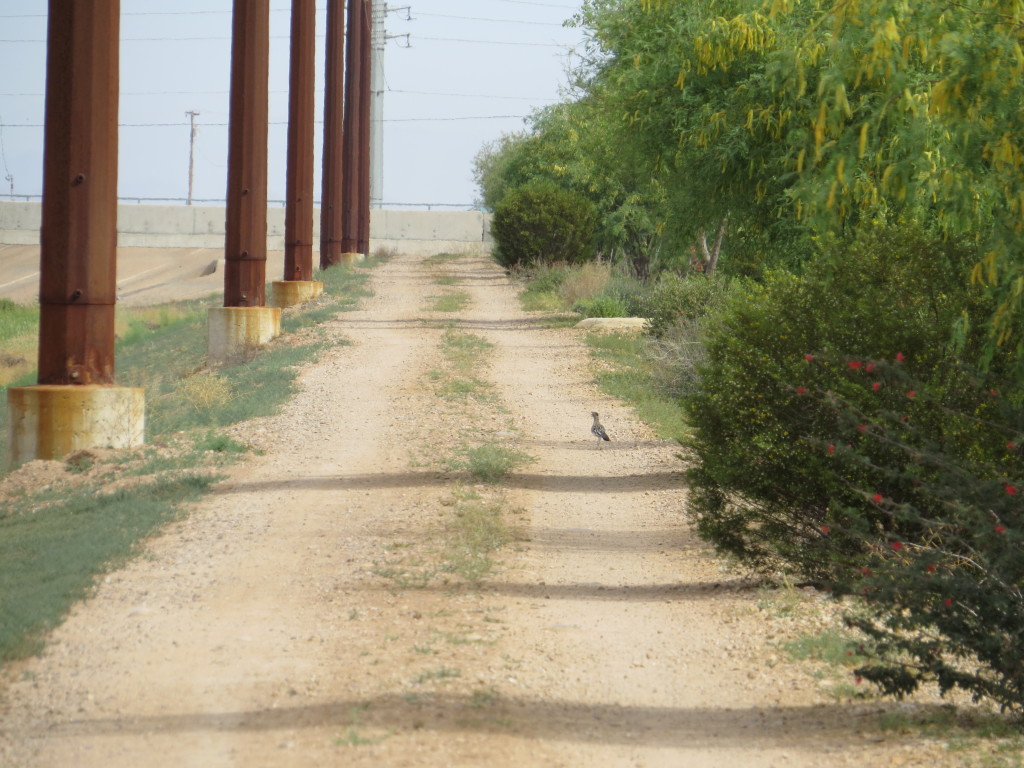
Evan loved the Roadrunner, even calling it his favorite bird of the trip if you can believe that. A couple hours after the outing above, he begged me to go looking for it again. I obliged. And, according to the law of former nemesis birds, we had no problem finding it (it’s on the very right edge of the dike in front of the white tree trunk). Note the erect, confident posture of the man-child who has now seen the Trogon and the Roadrunner.
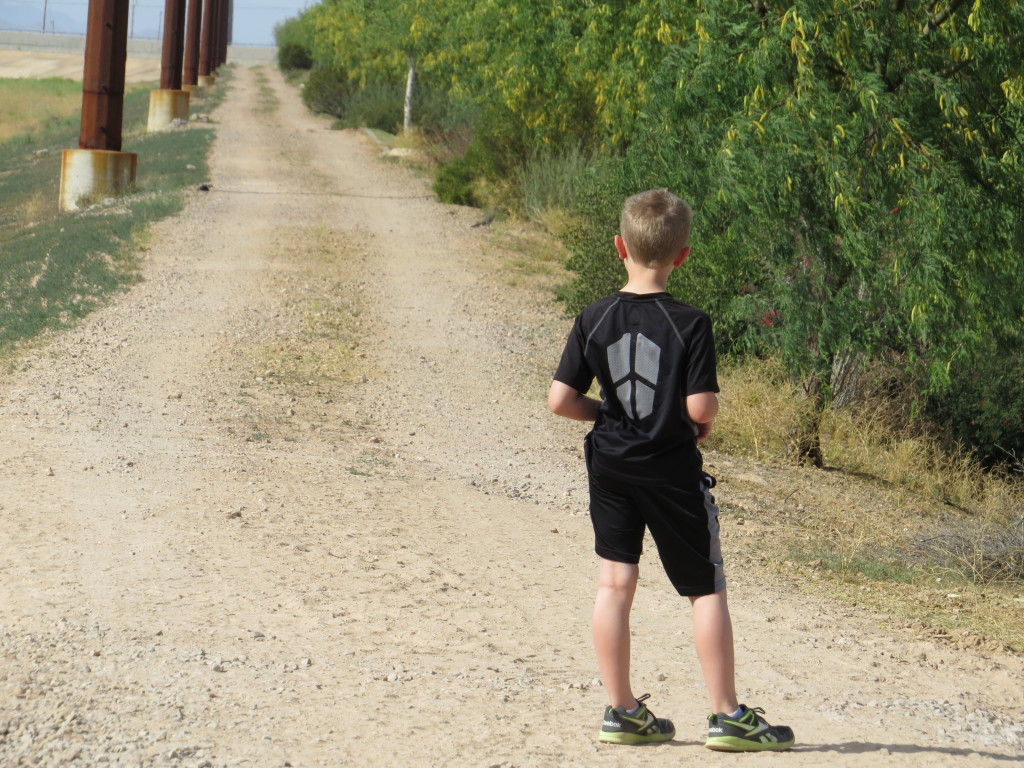
Evan’s excitement came from literally chasing after this bird as he would try to continually refind it after it would do its Houdini thing.
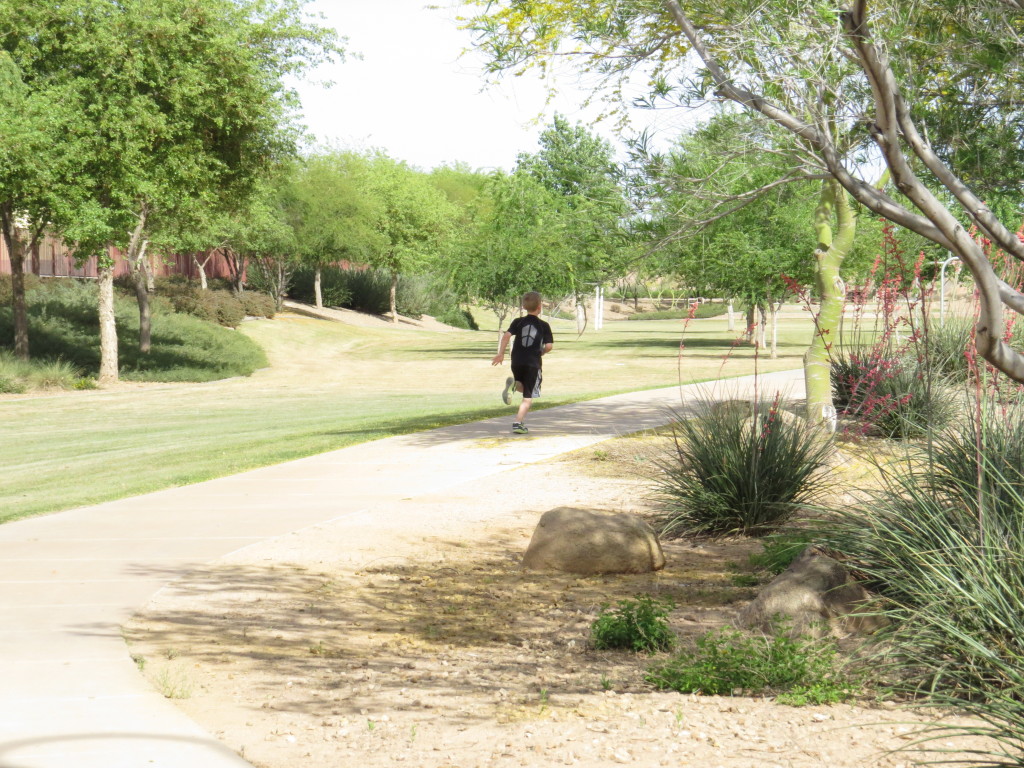
Evan was remarkable at spotting it and helping me get more opportunities to photograph it.
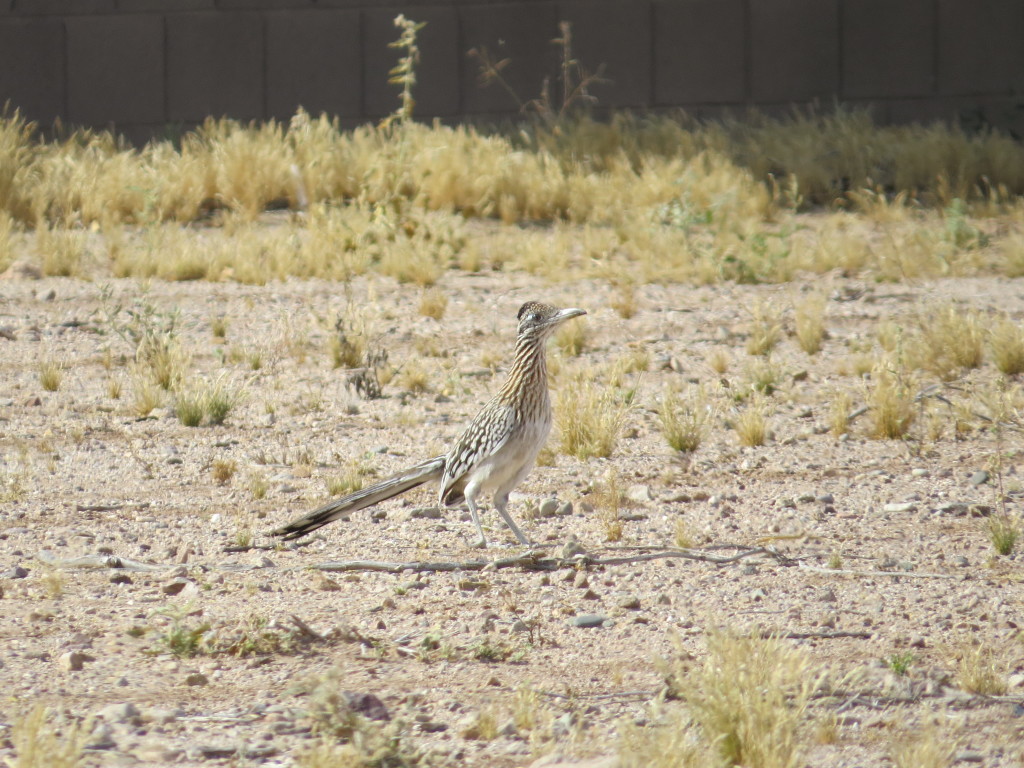
Conquering this nemesis and seeing Evan have so much fun and excitement with a bird was the best possible way to close our 2015 Arizona trip. It was a back-to-origins outing where I caught a glimpse of the same excitement he showed so many years ago when he would see our feeder filled with American Goldfinches. You are right Evan, this was your best bird of the trip.
The 2015 Arizona series has eight chapters: 1) Maricopa Birds, 2) Mt. Lemmon, 3) Florida Canyon, 4) Madera Canyon Part 1, 5) Madera Canyon Part 2, 6) Evan’s Big Discovery, 7) Owling at Coon Bluff on the Salt River, and 8) Evan’s Nemesis.

Ain’t that the truth??? Nemesis birds get to be really frustrating, but sooner or later it is bound to make itself visible. Congratulations and tell Evan I feel his pain! Glad he finally got it and then some!
“And then some” – indeed! He’s spoiled rotten when it comes to good bird sightings. I will pass on your congrats, Gordon.
I’m currently in a nemesis-free period in my birding, though a couple of birds are really becoming irritating and close to locking in that status.
May we all be victorious over our respective thorn-in-the-flesh birds!
I have a different type of “Nemesis Bird”: the common bird that foils all of my hopes for something interesting. It is the Song Sparrow, my least favorite native species of bird. They’re the secretive skulker in grass or thick brush that I work on for 15 minutes, phishing, nearly given up, only to finally get a good view of it: the same dang bird species that’s been singing from brushtops at my back. They sing: “Nothing special for you today! Ha ha you wasted your time on me! There was a Vesper Sparrow 100 yards further down that trail that I wanted to be sure you missed! And you did!”
Their songs vary enough that I often have to think about what it is. They’ve got a soft chip when skulking that could be so many other birds.
And they’re the ugliest of all the Emberizid sparrows: thick stripes, coarse streaks, no elegance or charm. Russets, browns, grays, and tans all mixed with no restraint or overall concept. Like a generic sparrow drawn in crayon. (This may vary, the ones I saw in Vancouver looked better.)
Finally: they show up early, stay all summer, and leave late. Yellow-rumped warblers could frustrate me the same way, but luckily they only pass through for about a month coming and a month going. We have SOSPs for what, 8 of 12 months?
I know I hijacked your post here. I’ve been looking for a venue to share this opinion, and your post title gave me the opportunity.
Roadrunners look so cool. I can’t fathom a cuckoo that doesn’t hide in trees, but runs around in the desert. Good that your son got a change to conquer his nemesis bird (definition 1).
I think the closest I have to nemeses are the Red-headed Woodpecker and Yellow-headed Blackbird. But I saw both in my youth, and I haven’t tried hard enough to go where they are, I want them more to come to me (patch dedication). Yet my older two kids have seen one or both when out with non-birding family.
Cuckoos are fascinating in looks, but especially behavior.
I don’t think you’ll get your nemeses at your patch. The Red-head likes open farm country (often going pole to pole between farm places) and the Yellow-head likes cattail marshes–you might have to venture out of the city!
I’ve seen photographs of RHWOs in the park, and my son claimed to see one last spring. (He can be a fabulist, so I’m only trusting him 85%.) I think there may be some decent open+trees habitat for them across the River, if/when the walkway reopens…
With YHBLs, it’s more about trips to parents’ or in-laws’ homesteads in southern and central MN. Kids have seen them with grandparents or my wife while driving to other things. They show me where they were later and I can’t find them.
I’m not giving up hope for my patch: some must migrate overhead to get to their summer or winter homes, and there’s a small section of cattail marsh in the park, maybe they stop here for the day.
We do
Go ahead with the Motel 6 philosophy for your patch birds, but meanwhile get out there man and see the cool ones!
That is a novel twist on the concept of Nemesis Bird. Very cool. However, I must completely disagree with your assessment of SOSP as I enjoy its song and plumage. Butter-butts, on the other hand, are annoying for their shear abundance during migration.
I do agree on YRWAs, to a point. I’ve strained my neck so many times to get a decent view of that Dendroica* warbler way up in the tree just to have it be yet another Myrtle. But then they leave and my rage subsides. And I’ve never been sure of a great warbler only to have it be Myrtle. With warblers, I’ve got defensive cynicism before I put in too much effort. (“I should double-check that Myrtle. Yep, Myrtle. That one? Yep, Myrtle. And that one?…”)
The huge numbers for a short while is cool, and a good demonstration to the kids of nature’s ephemeral phenomenon (more pleasing than giant swarms of insects). They even make me wonder how big Canada actually is.
Last spring, I noticed 20-30 YRWAs hawking insects over our pond like flycatchers. That’s something that SOSPs don’t do.
I’m not really arguing that SOSPs are the least interesting bird in North America. (They are, but I’m not trying hard to convince anyone of that.) Instead, like Def.1 Nemeses Birds, Def.2 Nemeses birds are personal. SOSPs and I have history. I spend too much time on them. They spend too much time acting like better birds around me. If I were a supervillain, they’d be the superhero that always foils my best-laid plans.
I found a Savannah Sparrow on Sunday in my patch (second ever there). Flew up, about eye level, 15 feet out. I nearly didn’t even look at it because split-second GISS told me “Song Sparrow”. Now I’m cursed to raise glass on every SOSP for another 14 months.
(I don’t mind singing SOSPs so much: they perch very visibly. It’s their skulking that drives me nuts.)
*ahem: Setophaga
Excellent points.
“I nearly didn’t even look at it” — always be on guard, Adam! The only reason I have a Renville County first record Mute Swan to my name is because my wife asked me what the big white bird was that I had dismissed in my peripheral vision as a Trumpeter or American White Pelican.
Slayed!
I have a birder friend who’s come to AZ at least 3 times, including SE AZ, and still not seen GRRO. It is an ephemeral bird and no one can predict its comings and goings, especially not lizards.
There was a nesting pair at the Botanical Gardens a few years ago and they terrorized the place, snatching MODO chicks right off the nest, mutilating chipmunks…it was a regular Piranha Bros. get-on.
Good to know we are (or were) not alone; even better to know we’ve one-upped this birder in the most pathetic of ways possible.
Imagine the horror of living in a world where Roadrunners overpowered us in size, speed, and sneakiness–could make for a very entertaining remake of “Honey, I Shrunk the Kids.”